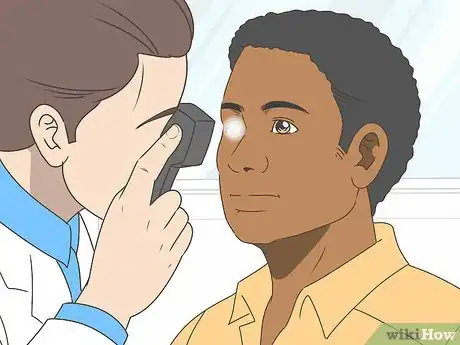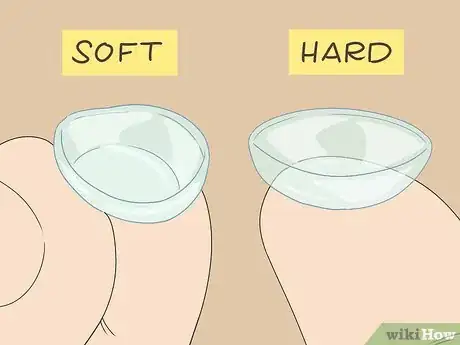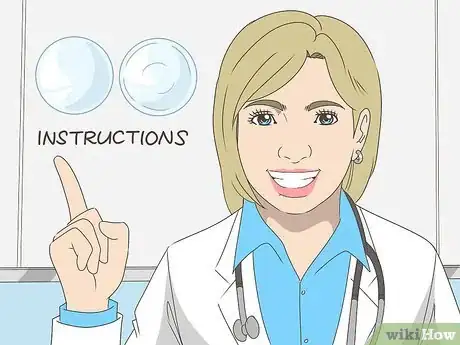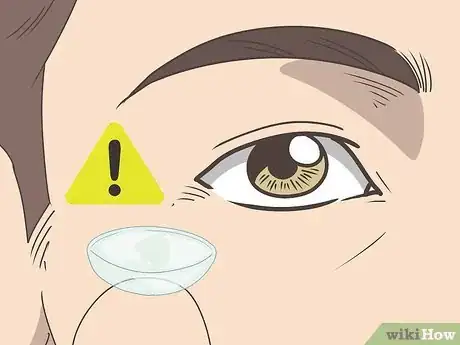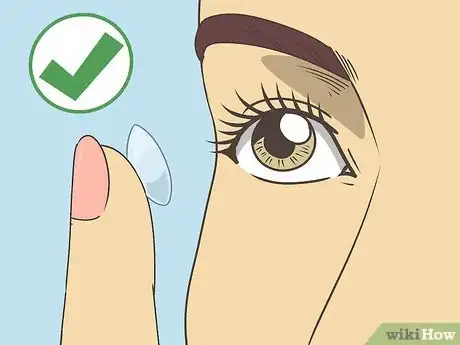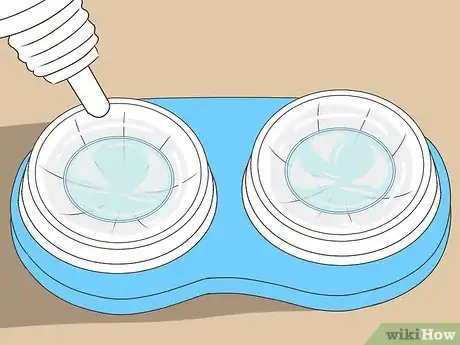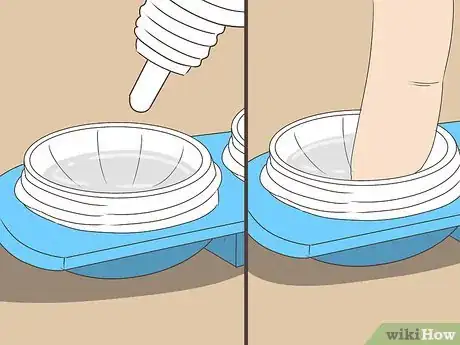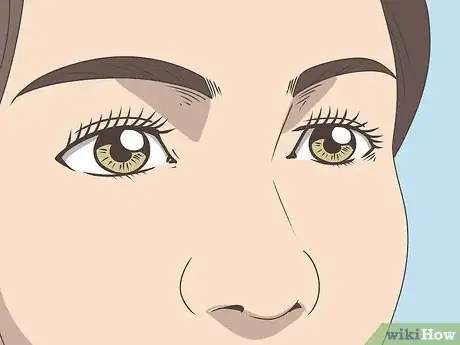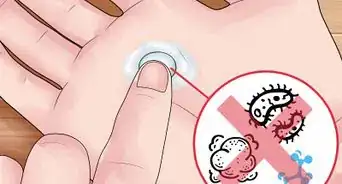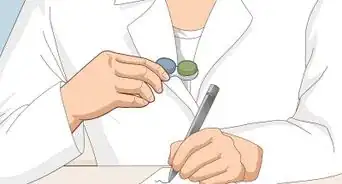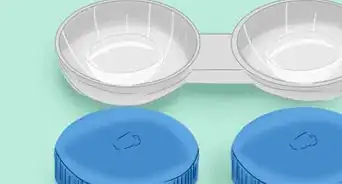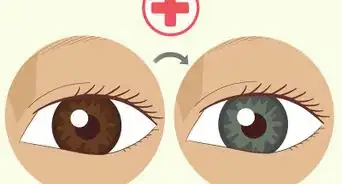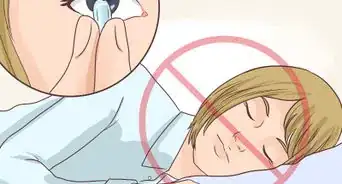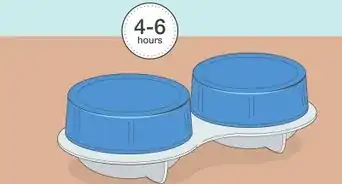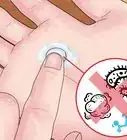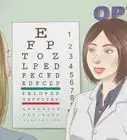This article was medically reviewed by Shaune Wallace, OD and by wikiHow staff writer, Christopher M. Osborne, PhD. Dr. Wallace is an Optometrist in Nevada with over 14 years of optometry experience. He received his OD from the Southern California College of Optometry in 2006 and is a member of the American Optometric Association.
This article has been viewed 52,163 times.
When you're new to wearing contact lenses, all the routines for putting them on and off and keeping them clean may not seem worth the trouble. It can seem even worse if you have consistent eye discomfort when the contacts are in. However, if you have the patience to find the right contacts for you, become familiar with the daily routines, and give your eyes time to adjust, you will likely become a quick convert to the benefits of wearing contact lenses.
Steps
Choosing the Right Contacts
-
1Always consult a licensed eye care professional. Contacts are a medical device and should be treated as such. This is true even if your eyesight is fine and you are only interested in turning your brown eyes into “baby blues” with colored lenses.
- Taking the time to have a thorough eye exam by a licensed practitioner is the best way to ensure that you are suited to wearing contacts. It also helps ensure that you get the type that will be most useful and comfortable for you, and that you will have access to proper guidance and care as needed.
- If you have dry eye or allergies, contacts may not be the best choice for you.
-
2Compare hard and soft contact lens options. Contact lens technology continues to advance at a rapid pace, but most contacts can basically be separated into the categories “soft” and “hard” (often called rigid gas permeable, or RGP).[1]
- Soft contacts are more flexible and fragile. Some are meant to last only a day, while others can be used safely for months. They are generally considered to be more comfortable to wear.
- Hard (RGP) contacts have a sturdier construction and are meant to last longer, even up to a couple of years. They can be more uncomfortable and harder to adjust to at the start, but generally are considered to provide sharper vision.
- If having the sharpest possible vision is important to you, or you have specific eye needs, you and your eye doctor may lean towards RGP contacts. Otherwise, most people are willing to sacrifice a tiny bit of vision clarity for the relative comfort and convenience of soft lenses.
- You may need to try different options to find what is right for you. Your eye doctor should be more than willing to guide you through this process.
- Other categories of contacts include a rigid lens attached to a soft outer rim or skirt.
Advertisement -
3Follow proper guidance and instructions. When you find the contacts that work for you, the best way to make the adjustment period go smoothly is to closely follow all advice provided by your licensed provider and the instructions included with your particular brand of lenses.
- Your eye doctor will want you to come in for a follow-up appointment to ensure that your eyes are adjusting to the contacts. You should keep up with regular check-ups beyond that as well.
- The care and cleaning tips provided in this article are generally applicable to most contacts, but always follow the instructions of your eye doctor and the manufacturer first.
-
4Watch for common adjustment problems. Some people are lucky and adjust to their new contacts within a day, but for many it can take several days or even a couple of weeks.
- Essentially, your eyes have to adjust to having foreign objects pressed up against them. During the adjustment period, irritation, tears, blinking, light sensitivity, and occasional blurry vision are common.
- You may find yourself suffering from dry eyes, cornea problems (scratching, infections, or swelling), allergic reactions (usually to your cleaning solution), uncomfortable deposits on the lenses, or eye or eyelid inflammation. Patience and proper cleaning should clear up these issues most of the time, but always consult with your eye doctor.[2]
- If your contacts continue to give you problems, talk to your doctor about trying a different brand. Different companies use different materials and technology to make their contacts and switching brands may help with comfort.
- A small percentage of people will find that they cannot comfortably or safely wear contact lenses, due to having overly sensitive eyes or other issues. People who have frequent eye infections, severe allergic reactions, insufficient tear production, are regularly exposed to dust or chemical fumes, or are unable (or unwilling) to care properly for their lenses may not be suited to contacts.
Maintaining Proper Wear and Care
-
1Wear and remove contacts as often as directed. There are contacts that need to be removed every night, and those that can be left in for long stretches of time without cleaning. The important thing is to know and follow the wear recommendations for your particular lenses.[3]
- Especially when you are new to the process, removing and cleaning contacts can seem like a time-consuming chore. For comfort, effectiveness, and safety, however, always remove and clean or replace your contacts on the schedule recommended for that specific brand and by your eye care professional.
- Your eye doctor may recommend a “breaking in” period for a week or two when you start wearing contacts. During this time you will wear them for longer stretches each day to slowly acclimate to them. This is more common with hard (RGP) lenses.[4]
-
2Clean your contacts properly. Your eye care professional should provide you with detailed instructions on how to put your new contacts in, take them out, and clean them. Instructions on how to put contacts in are fairly consistent across types and brands, but refer to your brand's instructions or website for particular details.[5]
- Cleaning (non-disposable) lenses properly is essential to limiting the chance of infection and other eye problems. The basics of the process are usually the same regardless of lens type:[6]
- Wash your hands with a mild soap (without moisturizers) and dry them with a clean, lint-free towel.
- Remove one lens, douse it with the recommended contact solution, and rub the lens in your palm with your finger (even if marketed as “no rub”).
- Rinse with solution for as long as recommended. You normally need to repeat the cleaning and rinsing process for RGP lenses.
- Place the lens in a clean case, then fill it with fresh solution (don't “top off” any existing solution), and keep in the case for as long as recommended. Repeat with the other lens.
- If the recommendations for your lenses vary from this list, follow them.
- Cleaning (non-disposable) lenses properly is essential to limiting the chance of infection and other eye problems. The basics of the process are usually the same regardless of lens type:[6]
-
3Clean and replace your case as recommended. You can clean your contacts perfectly right, but if you store them in a dirty case, your chances of infection or other problems will be greatly increased.[7]
- To clean your case: dump out the old solution; rub the inside with clean fingers; fill each well with solution, then discard it; let it air dry upside-down with the lids off.[8]
- Do this cleaning process (or that recommended by your eye doctor) as frequently as advised. Replace your case every three months or as recommended.
- On related notes: Never let the tip of your solution bottle touch anything. This may permit germ transmission. Also, never use tap water on contacts or accessories. It can contain the long-lasting acanthamoeba bacteria, which can be particularly harmful to the eyes.
-
4Give your eyes time to adjust. Patience is a great virtue when adjusting to contact lenses. As mentioned, very few people are unable to wear contacts, so the odds are good that you can overcome any discomfort that you experience at first.
- Your eye doctor may recommend the use of a special protein removal product to deal with discomfort, or the use of rewetting drops to moisten dry eyes. If you show signs of an allergic reaction to your contact solution, a switch to a preservative-free product may be all that is required.[9]
- The newer silicone hydrogel lenses and older technology often found in generic solutions can cause redness and irritation. Follow your doctor's recommendation on which solution to use to prevent this.[10]
- If you are using monovision lenses (where one eye has a contact meant to improve distance vision, while the other aids close-up vision), you can expect a somewhat longer adjustment period. A typical adjustment period for monovision is about two weeks. But in the end, most people adjust to these just fine as well.[11]
References
- ↑ http://www.webmd.com/eye-health/contact-lenses
- ↑ http://www.webmd.com/eye-health/contact-lenses
- ↑ http://www.allaboutvision.com/faq/contactlens.htm
- ↑ http://www.webmd.com/eye-health/contact-lenses
- ↑ http://www.bausch.com/your-eye-concerns/wearing-contact-lenses/wearing-and-caring-for-contact-lenses#.VhUcX1UViko
- ↑ http://www.allaboutvision.com/faq/contactlens.htm
- ↑ http://www.aao.org/eye-health/glasses-contacts/contact-lens-care
- ↑ http://www.aao.org/eye-health/glasses-contacts/contact-lens-care
- ↑ http://www.allaboutvision.com/faq/contactlens.htm
